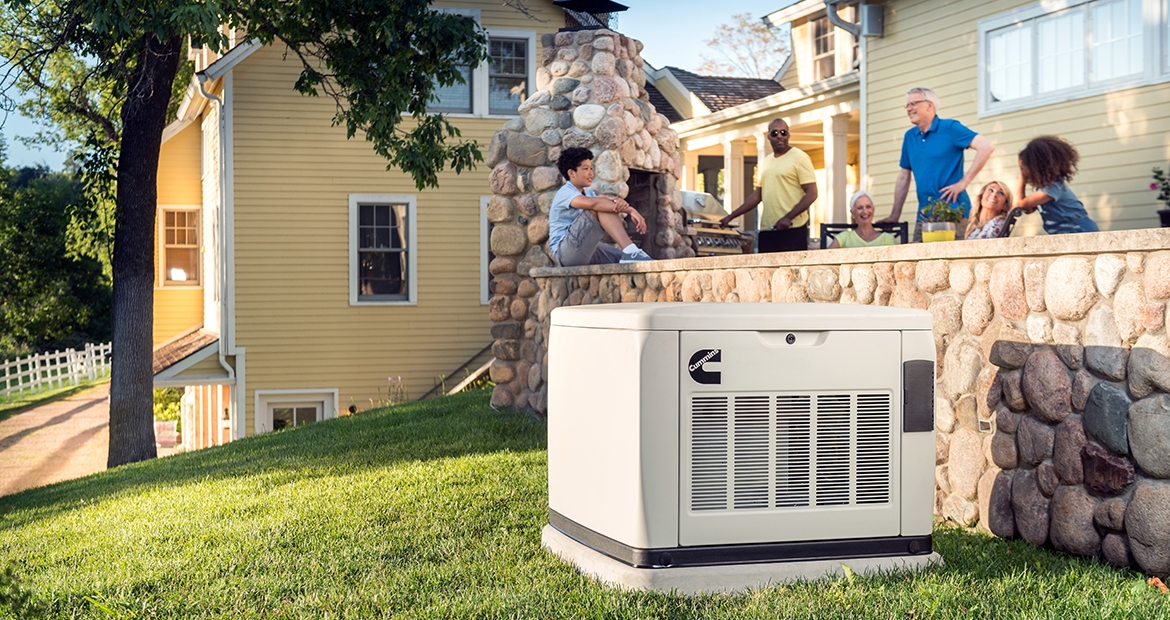Home Generator Safety Checklist
Follow these home generator safety tips when preparing your home and family for long-term power outages.
By Catherine Morgenstern, Brand Journalist

With a little more than one month left on the already tumultuous Atlantic hurricane season, not to mention the likelihood of severe winter storms on the horizon, now is the time for power outage preparation.
Preparing for long term outages is important, and if you have already taken the step to ensure continuous emergency power by purchasing a generator, consider the steps you need to take to safely operate a backup home generator.
The biggest risk of home generators is carbon monoxide (CO) gas. It is called “the silent killer” because it is odorless and colorless, meaning that most people inhaling it don’t even realize until it is too late. Symptoms of CO poisoning can look a lot like the flu, and in severe cases, it can cause permanent brain damage or death. CO can be especially dangerous for people who are sleeping or intoxicated.
Here are a few tips for keeping your family safe while operating a generator during your next power outage.
Portable Gas or Diesel Generators Safety Tips:
- Always follow manufacturer instructions when setting up a generator.
- Never use a generator inside your home or garage. They should be used outdoors in well-ventilated areas that are at least 20 feet away from any homes or dwellings.
- Look for any places air can enter the home near your unit and ensure that those are properly closed and sealed off. This includes windows or doors, air intakes, nearby dryer vents or crawl spaces.
- Reliable, approved, and operable battery powered CO detector alarms should be installed in proper locations on each floor in the home as specified by the manufacturer.
- Give the generator a break that allows for any concentrated exhaust to clear away from the area. Open your windows and doors during this break to air out any concentration that may have collected in your home.
- Ensure that your generator is being appropriately maintained, including regular oil changes.
Permanently Installed Gas or Diesel Generators Safety Tips:
- Install the generator outdoors only. Work with a professional installer to locate the generator away from windows, doors, and other openings to the house where exhaust gases will disperse away from the house or occupied areas.
- Install all parts of the generator enclosure at least 60 inches from any openings in walls of structures that may be occupied. Examples of wall openings include, but are not limited to, operable windows, doors, dryer vents, fresh air intakes for heaters, etc.
- Look for any places air can enter the home near your unit and ensure that those are properly closed and sealed off. This includes, but not limited to, windows or doors, air intakes, nearby dryer vents or crawl spaces. Your generator must be located such that exhaust gases are not able to accumulate in an occupied area.
- Ensure that generators are used, maintained, and operated in accordance with manufacturer recommendations. If there is a concern that the installation standards have not been met, get an appropriate party, like the installer, out to inspect it.
- Give the generator a break that allows for any concentrated exhaust to clear away from the area. Open your windows and doors during this break to air out any concentration that may have collected in your home.
- Check the exhaust system for corrosion, obstruction, and leaks every time you start the generator and every eight hours when run continuously.
- Ensure that your generator is being appropriately maintained, including regular oil changes.
- Reliable, approved, and operable battery powered CO detector alarms should be installed in proper locations on each floor in the home as specified by the manufacturer.
Cummins home generators are extremely quiet, aesthetically pleasing and remotely accessible. If you have not yet taken the step to purchase a backup generator, consider scheduling a painless home assessment with your nearest Cummins dealer. In just a few minutes you can know exactly how little the ultimate peace of mind can cost.
Author Profiles

Catherine Morgenstern, Brand Journalist
Catherine Morgenstern is a Brand Journalist for Cummins, covering topics such as alternative propulsion, digitalization, manufacturing innovation, autonomy, sustainability, and workplace trends. She has more than 20 years of experience in corporate communications, holding leadership positions most recently within the Industrial Capital Goods sector. Catherine began her career as a marketing writer for a biotechnology company, where she learned to take complicated and highly technical information and make it accessible to everyone. She believes the concept of “storytelling” is more than a trendy buzzword and loves to find ways for her readers to make personal connections to her subjects. Catherine has a passion for technology and innovation and how its intersection can make an impact in all our lives. Catherine recently moved back to her hometown in the Hudson Valley, New York after a several decades in Los Angeles and Chicago. She is a graduate of UCLA and enjoys gardening and spending time with her husband and three children.
Related Tags